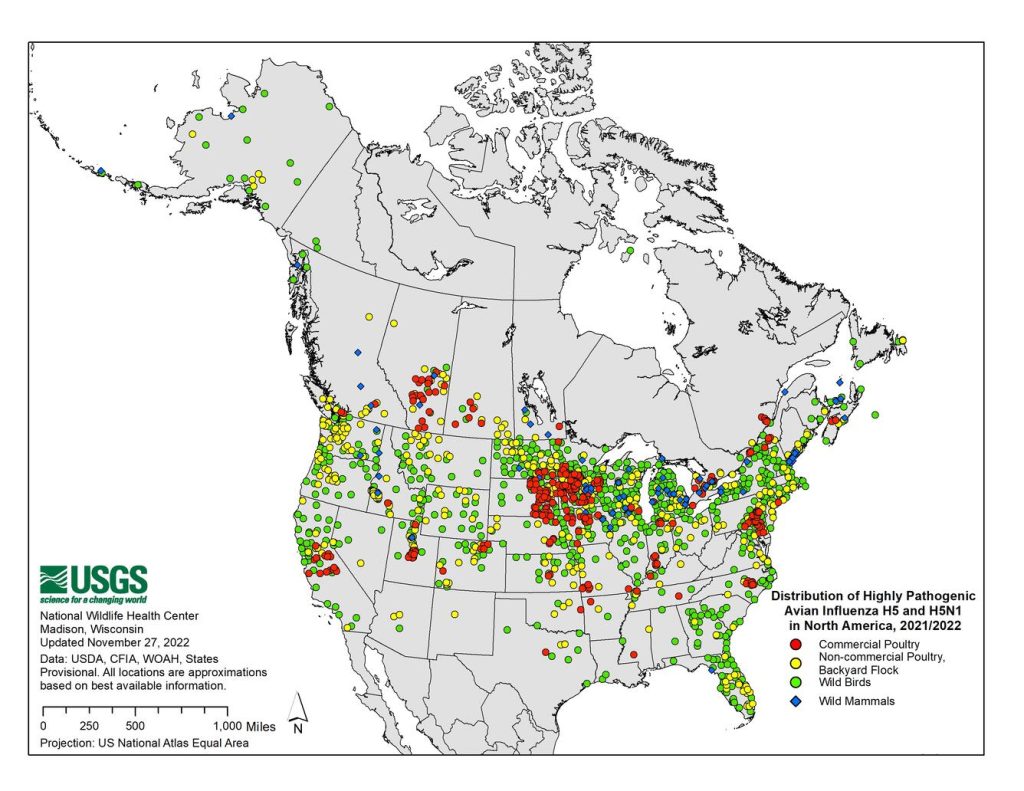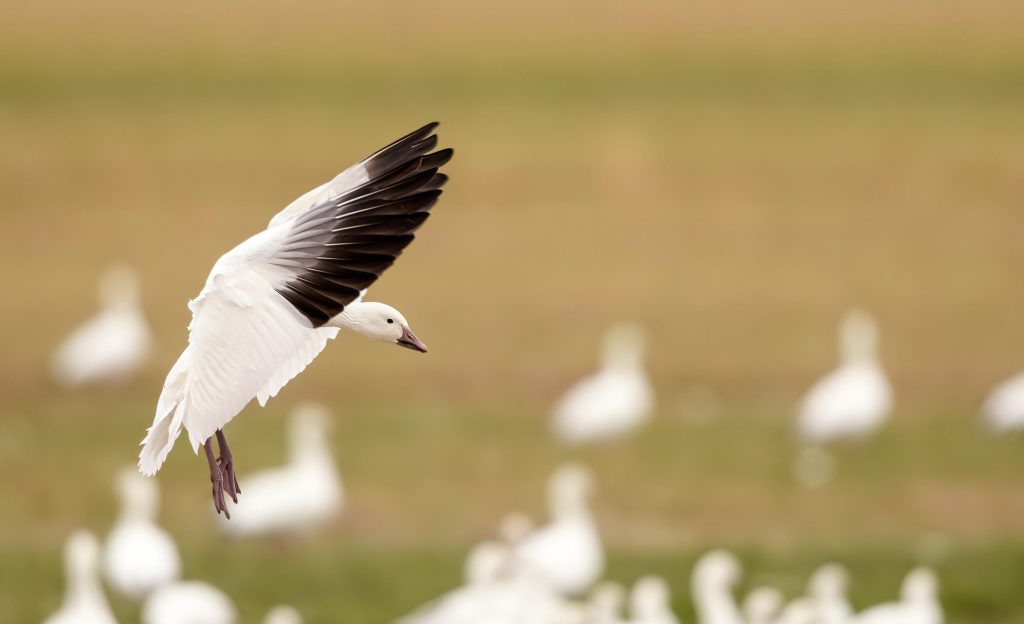Updated June 12th, 2024
Beginning on the east coast in 2021, H5N1 Avian Influenza (or Bird Flu) strains have spread across the United States over the last year. As wild bird migration began in spring of 2022, reports have become more common in the Pacific Northwest and Alaska. And at the end of 2022, iNaturalist is hosting an international portal to collect community reports of potentially infected and dying birds.
Because COASST surveyors come into close contact with dead birds on a regular basis, we have compiled information here about Avian Influenza and the current outbreak, so that you may keep informed as you assess and implement safety precautions on COASST surveys. The health and safety of our surveyors is always a top priority!

It is comforting to note that the CDC describes this variant of Avian Influenza as not particularly communicable to humans, though one case of bird-to-human transmission and one case of cow-to-human transmission has been documented in the United States:
“This one H5-positive human case does not change the human health risk assessment. CDC will continue to watch this situation closely for signs that the risk to human health has changed.”
CDC, April 28th, 2022
“CDC has preliminary analysis of genetic sequences showing that these viruses remain primarily avian and are not well adapted to people.”
CDC, April 5, 2024
Following a series of transmission events between dairy cows and humans, the CDC released this update on June 7th 2024.
This is good news for COASSTers, and it is also worth noting that no known cases of H5N1 transmission between beached birds and humans have ever been documented.
To to prevent H5N1 transmission, the CDC recommends safety practices for individuals working with birds that will sound very familiar to COASST participants: wear gloves, wash your hands, and wear a mask to prevent inhalation of viral particles. We know you all carry gloves and wash your hands as a matter of practice on you beached bird surveys. This is your reminder to keep that personal protective gear on hand!
It’s also a good idea to use separate clothing, backpacks, and shoes for your beach surveys, which isn’t used for activities off the beach.

For more information about zoonotic disease (a.k.a. disease that can travel from animals to humans) take a look at your protocol binder, section 2-8. The updated regional links in that section can be found here: National, Alaska, Washington, Oregon, California.
If you’re interested in the impacts of H5N1 on wild bird populations, you can track reports of mortality on birds with us on this page.
If you are a hunter, or use birds and wild game for subsistence in any way, you might be interested in further recommendations from the USDA. Read more here.
Stay safe COASSTers, and please let us know if you have any questions. We will post updates as they come in!
